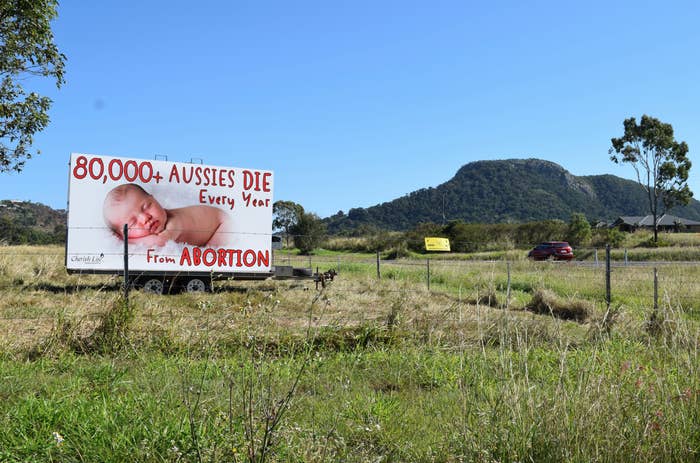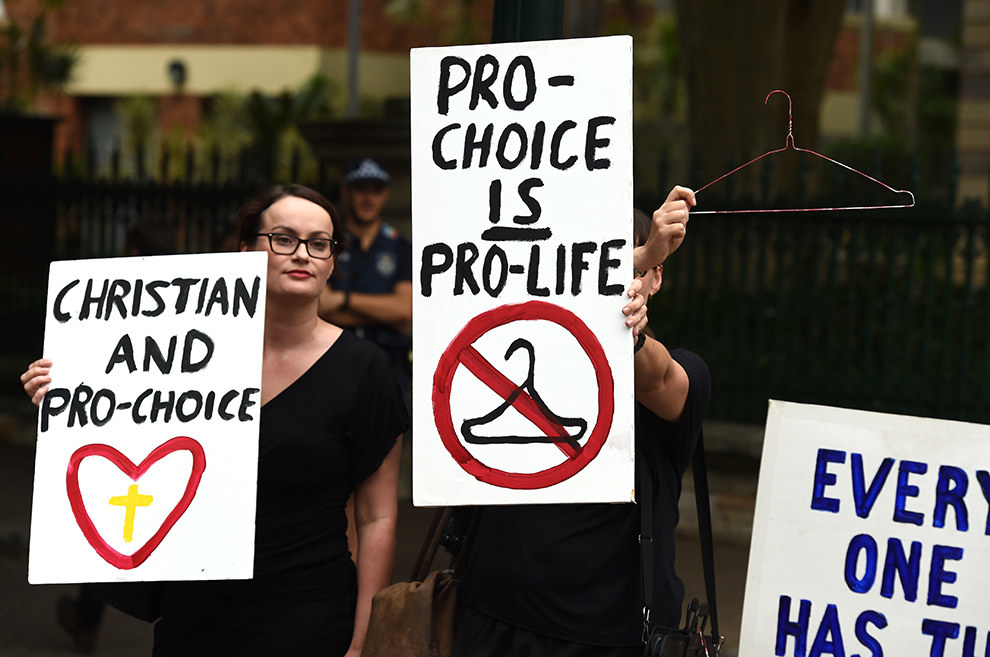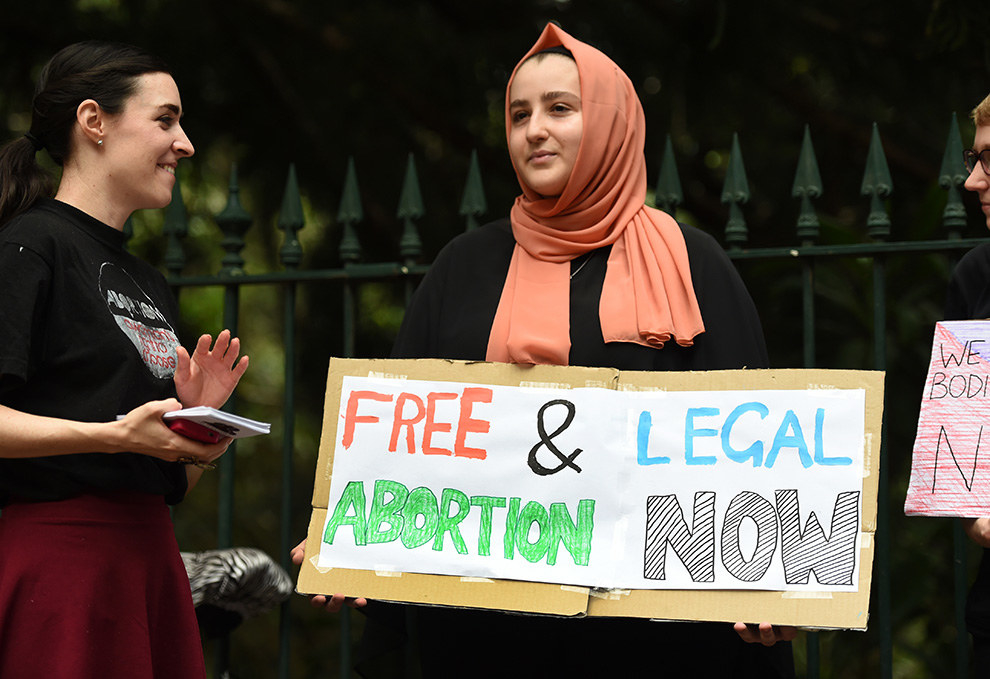In Australia's sunshine state of Queensland, where abortion is still a crime, two billboards erected by Christian lobby group Cherish Life illustrate a common misconception about abortion.

The billboards feature a baby, reaffirming the myth that later term abortions are common or make up a statistically significant portion of terminations in Australia.
They do not.

A later term abortion is one performed at or after 24 weeks gestation.
It's difficult to get up to date statistics on abortion in Australia, but according to the most recent figures from the Australian Institute of Health and Welfare, just 0.7% of abortions were carried out at or after 20 weeks. Most (94.6%) of abortions in Australia take place before 13 weeks of gestation.
The first 12 weeks of pregnancy are known as the "first trimester".

Abortion is performed from six weeks gestation, when an embryo is the size of a lentil. At the end of the first trimester, an embryo is the size of a small apricot.
So an accurate, but less emotive, billboard would have featured a depiction of what most Australian women are aborting in the first trimester of a pregnancy: a tiny embryo between the size of a lentil and an apricot.
Unlike in most other Australian states, abortion is only lawful in Queensland if performed to “prevent serious danger to the woman’s physical or mental health”.
There's currently an ongoing inquiry into terminations before a bill to decriminalise abortion is debated in the state's parliament.

Witnesses from the state's health department, who last month appeared before the inquiry, said there were 120 terminations performed at or over 20 weeks gestation in 2015 statewide, and that the majority of abortions would have been performed before 22 weeks.
When asked what the "latest late term abortion" was that had occurred in the state, Queensland Health's Statewide Maternity and Neonatal Clinical Network chair, Associate Professor Dr Rebecca Kimble, said it tended to be at 22 weeks.
"But then we have had to have terminations – and we are talking really rare situations – where continuation of the pregnancy of an undiagnosed cardiac condition in the mother, for instance, may require termination of pregnancy beyond 22 weeks because continuation would kill the mother," Kimble said.
"We really are talking very, very small numbers – one or two a year if even that."

The state's pro-choice counselling service, Children By Choice, said second trimester abortions were rare.
Most occurred because the pregnancy was wanted but the parents had received a devastating foetal diagnosis or maternal health complication or the patient lived in rural and remote areas of Queensland and had experienced long delays accessing an abortion provider.
Other reasons were that the patient was under 14 years of age and hadn't recognised the pregnancy earlier or lived with "high levels of violence and control" and had been unable to seek support earlier without their partner knowing.
